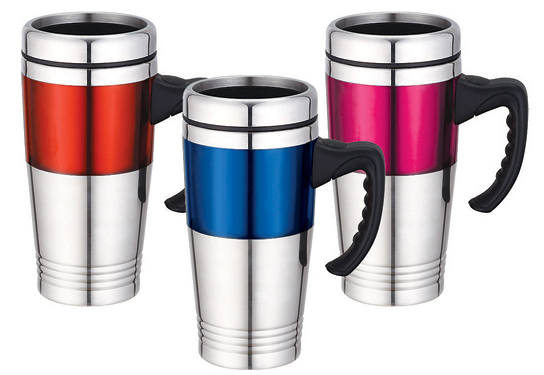According to manufacturers’ recommendations, there are three common and convenient types of thermos: double-wall thermos, vacuum flask, and electric flask. The double-wall thermos can maintain the temperature of beverages, fruits, etc. for 24-36 hours, with a capacity of 0.2-1.8 liters. The double-wall thermos is coated with a non-stick enamel layer to prevent residue buildup and chlorine odor in water. Popular brands of double-wall thermos include Gali (Taiwan), Tiger (Japan), Zorirushi (Thailand)… The vacuum flask – tea pot can be used to hold boiling water or make tea, keeping it hot for 12 hours. When pouring water, you don’t have to open the lid, just press the pressure pump button, and the water will flow out.
The flask is constructed like a regular thermos but under the lid, a cylindrical funnel is attached for placing loose or fresh tea. The funnel is made of stainless steel and heat-resistant plastic. The products from Japan (Tiger), Taiwan (Gali), China (Lilac, Niko)… have a capacity of about one liter. To differentiate, the Japanese thermos has three reinforced pins connecting the inner glass layer at the bottom of the flask. Whereas thermos flasks produced by other countries usually have these reinforced pins on the side of the flask.

Types of thermos flasks
Electric kettle: You can pour water into these types of kettles and boil it like an electric kettle. The kettle is made up of four layers, two layers of glass and two layers of plastic or metal. The product comes in many brands such as Sharp, Panasonic (made in Japan, assembled in Thailand), Gali (Taiwan), Ichiban (Singapore), Tiger (Japan)… with a capacity of 1.6-4 liters, keeping the heat for 12 hours. There are various modes available, such as selecting water boiling temperatures of 60-90-98 degrees Celsius, setting a timer to boil again, and keeping warm.
This type of product features an electric pressure pump system, allowing water to flow with just a push of a button. It also has an electronic lock valve button on the lid to prevent accidental scalding. As for the material, there are two types of thermal flasks available: plastic and metal. The plastic flask is constructed with a dual-layer structure, with a hollow air space in between for insulation. The advantage of this flask is its affordable price, ranging from 40,000 to 100,000 dong per flask. However, it does not retain heat as effectively and is not suitable for holding hot water.
Metal thermos is more durable and sturdy, with a bright metal casing (stainless steel, stainless steel) or electrostatic painting (aluminum), divided into two types: the innermost type is made of the same material as the casing, capable of holding hot water up to 100 degrees, but only retains heat for 8-24 hours (hot – cold); The innermost type is coated with a layer of silicone to better retain heat, can keep ice for up to 48 hours, but only used for water below 70 degrees Celsius. This type can cost up to several hundred thousand. To keep the thermos hot for longer, do not fill it up, leave a space between boiling water and the plug to insulate because the heat transfer coefficient of water is about 4 times higher than that of air.
If boiling water is poured, heat is easily transmitted to the flask’s outer surface through the conduction of water. If there is an air gap, it will slow down heat transfer. According to the usage instructions provided by Hachi Hachi company, a supplier of thermal flasks, in order to achieve optimal thermal insulation, customers should avoid placing the flask in excessively high or low temperatures (depending on whether they want to keep it hot or cold) as it can significantly reduce its heat retention capability.
In addition, do not overfill it with water, do not use it to hold milk, fruit juice, soup, etc. If you leave tea in it for a long time, the tea may change color, so it is recommended to use tea bags. If there is sediment at the bottom of the flask, you can handle it as follows: Fill the flask with about 10% vinegar, do not cover the lid, soak for about 30 minutes. Then use a soft sponge to clean the inside of the flask and rinse with clean water. Currently, on the market, there are many unbranded flasks and thermoses, originating from China, sold at low prices with varying quality. As this is a “technology” product, demonstrated through its heat retention ability, consumers should choose reputable brands.



































